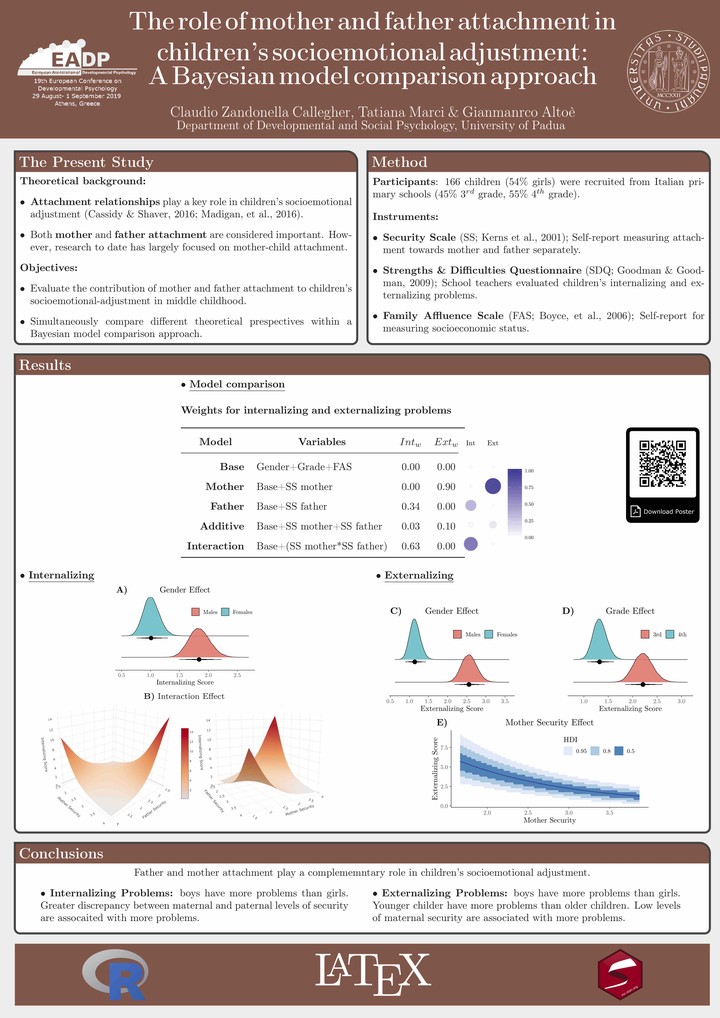The role of mother and father attachment in children’s socioemotional-adjustment: A Bayesian model comparison approach

Abstract
Attachment relationships play a key role in children’s socioemotional adjustment (Cassidy & Shaver, 2016). Although scholars recommend to consider both mother and father attachment when studying internalizing and externalizing problems, research to date has largely focused on mother-child attachment (Madigan, et al., 2016). To simultaneously evaluate the contribution of attachment security toward mother and father, the current study compared different theoretical models within a Bayesian model comparison approach. This method allowed to compare models in a unified framework using a continuous and informative measure (i.e., evidence) rather than a series of simplified, accept-reject dichotomous decisions typically adopted in the Null Hypothesis Significance Testing approach. Participants (n = 166, mean age = 9 years and SD = 7 months, 54% girls) were recruited from Italian primary schools. Children completed measures of attachment security (SS; Kerns et al., 2001) and their teachers completed a questionnaire for the assessment of internalizing and externalizing problems (SDQ; Goodman, 2001). Generalized Linear Models were estimated using a truncated Poisson distribution to respect the metric and distribution of dependent variables (i.e., internalizing and externalizing problems). Models were then compared through Watanabe-Akaike Information Criterion weights (WAICw) to identify the most plausible model given the set of alternative models and the observed data (McElreath, 2016). The most plausible model for externalizing problems (with a 90% probability of being the best) indicated that lower levels of security towards mother were associated with more problems. The most plausible model for internalizing problems (63% probability of being the best) suggested that greater levels of discrepancy between security toward mother and father were associated with more problems. Our findings support the differential role of father and mother attachment in children’s internalizing and externalizing problems, and highlight the usefulness of a Bayesian model comparison approach to directly compare different models in terms of evidence.